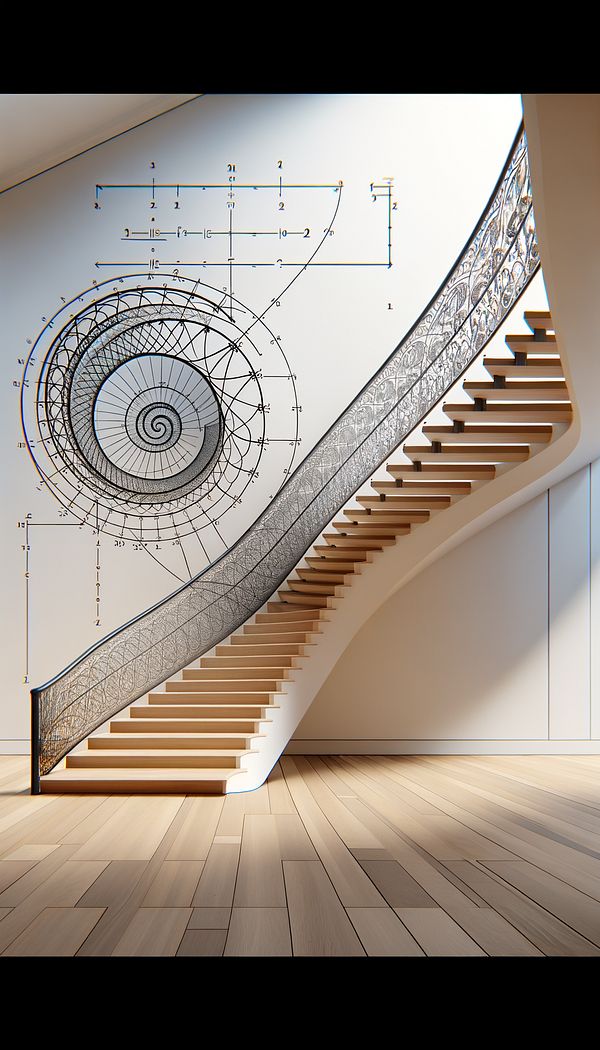What is Evolute?
Evolute is a term primarily used in mathematics and architecture, referring to a curve generated from another curve.
Description
In the realm of interior design, the term evolute might be less commonly encountered compared to its more frequent usage in mathematics and architecture. However, understanding its foundational concept can offer valuable insights when discussing certain design elements, especially in architectural features within interior environments. An evolute in this context is essentially a curve that is derived from another predefined curve, often serving as the envelope or pathway traced by the moving end of a line segment that is normal (perpendicular) to a given curve.
Recognizing an evolute's role in interior design is particularly beneficial when discussing the architectural detailing that incorporates flowing, curvilinear forms or when referring to specific decorative patterns that mimic this concept. It reflects the beauty of mathematical precision in design, showcasing how geometric principles can be applied to create aesthetically pleasing and harmonious spaces. Evolutes can influence the design of elements such as wall treatments, furniture silhouettes, decorative objects, and even the spatial planning of rooms.
In essence, the application of evolute principles in interior design bridges the gap between the abstract beauty of mathematical curves and the tangible reality of designed spaces, allowing for a deeper exploration of form, symmetry, and movement in a room's visual and physical composition.
Usage
An example of evolute usage in interior design can be seen in a custom-designed staircase where the railing follows a complex curvilinear path, derived from an underlying geometric principle reminiscent of an evolute. Similarly, in furniture design, a table with legs that twist and curve outward in an elegant manner may be informed by evolute principles, demonstrating how these concepts can inform the shape and structure of practical design elements.
FAQs
-
How is the concept of evolute applied in interior design?
Evolute principles are applied in interior design through architectural details, furniture design, and decorative patterns that incorporate flowing curvilinear forms, reflecting the beauty of mathematical precision in creating aesthetically harmonious spaces.
-
Can understanding evolutes improve interior design projects?
Yes, understanding evolute principles can elevate interior design projects by offering a unique perspective on form and geometry, enabling designers to explore innovative, aesthetically pleasing arrangements and structures.
-
Are evolutes commonly used in interior design?
While not as commonly used as other design principles, evolutes offer a unique approach to incorporating geometric beauty and precise curves into interior spaces, making them a valuable concept for projects aiming for a distinct architectural or decorative flair.
Practical Application
To apply the concept of evolutes in your design projects, start by exploring the underlying geometric principles and how they can guide the formation of curvilinear shapes in architectural details, furniture, or decorative items. Experiment with different curves and see how their derived evolutes can contribute to the overall aesthetic and functionality of a space. This approach not only enhances the visual appeal but also offers a coherent structure grounded in mathematical beauty.
-
Architectural Elements199 articles
-
Design Styles478 articles
-
Furniture Types599 articles
-
Decorative Techniques322 articles
-
Technical Terms38 articles
-
Air BedAn air bed is a bed or mattress filled with air.
-
Hoop Back ChairA chair featuring a circular or hoop-shaped back frame that supports the backrest.
-
Wing ChairA wing chair is a high-backed armchair with side panels or "wings" on the back, originally designed to protect from drafts or trap heat from a fireplace.
-
EmpireEmpire refers to an opulent and majestic interior design style that originated in France during the First French Empire (early 19th century).
-
Center DrawA center draw refers to a method of opening window treatments, such as curtains or drapes, from the center outward.
